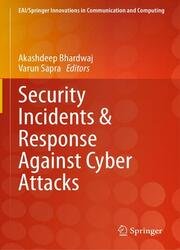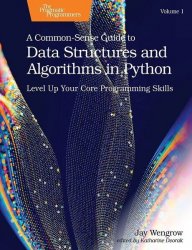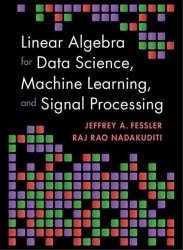 Название: Security Incidents & Response Against Cyber Attacks
Название: Security Incidents & Response Against Cyber AttacksАвтор: Akashdeep Bhardwaj, Varun Sapra
Издательство: Springer
Год: 2021
Страниц: 250
Язык: английский
Формат: pdf (true), epub
Размер: 37.0 MB
This book provides use case scenarios of Machine Learning (ML), Artificial Intelligence (AI), and real-time domains to supplement cyber security operations and proactively predict attacks and preempt cyber incidents. The authors discuss cybersecurity incident planning, starting from a draft response plan, to assigning responsibilities, to use of external experts, to equipping organization teams to address incidents, to preparing communication strategy and cyber insurance. They also discuss classifications and methods to detect cybersecurity incidents, how to organize the incident response team, how to conduct situational awareness, how to contain and eradicate incidents, and how to cleanup and recover. The book shares real-world experiences and knowledge from authors from academia and industry.
Cybersecurity incidents and cyberattacks have been around for as long as computers have been around, but the complexity and sophistication of these incidents and attacks recently, the magnitude of attacks, costs, and irreparable damage are something that cannot be ignored anymore. Security incident planning and mitigation is critical to an organization survival. Being able to counter cyberattacks and prevent attacks must be the requirement of an organization’s standard operating procedures. Part of the blame for the increase in security incidents and cyberattacks lies with organization, institutions, and individuals trying to prevent them. For example, organizations like Cisco provide comprehensive training about computer networks and cybersecurity. This provides in-depth knowledge of the networks/protocols and how to exploit them. Institutions teach courses on ethical hacking and individuals make and upload “how to hack” videos on YouTube.
To make matters worse, security incidents and cyberattacks are now being armed with technologies like Artificial Intelligence, which can easily outsmart human responses in trying to detect, mitigate, and counter attacks. There is a need to train more cybersecurity analysts and equip them with the state-of-the-art hardware and software to mitigate future incidents and attacks. Virtual Private Networks, the TOR browser, and the Dark Net are some of the tools among many others used by hackers, thus making it difficult to identify the perpetrators. Cybersecurity has remained and will remain a “cat-and-mouse” game. There will be attacks and exploits and then there will be patches, upgrades, and antiviruses. We will always remain one step behind the attackers. Our best effort in this game is to have proper procedures in place, the hardware and the software to detect security incidents and cyberattacks and mitigate them.
Contents:
Скачать Security Incidents & Response Against Cyber Attacks
[related-news] [/related-news]
Комментарии 0
Комментариев пока нет. Стань первым!
















